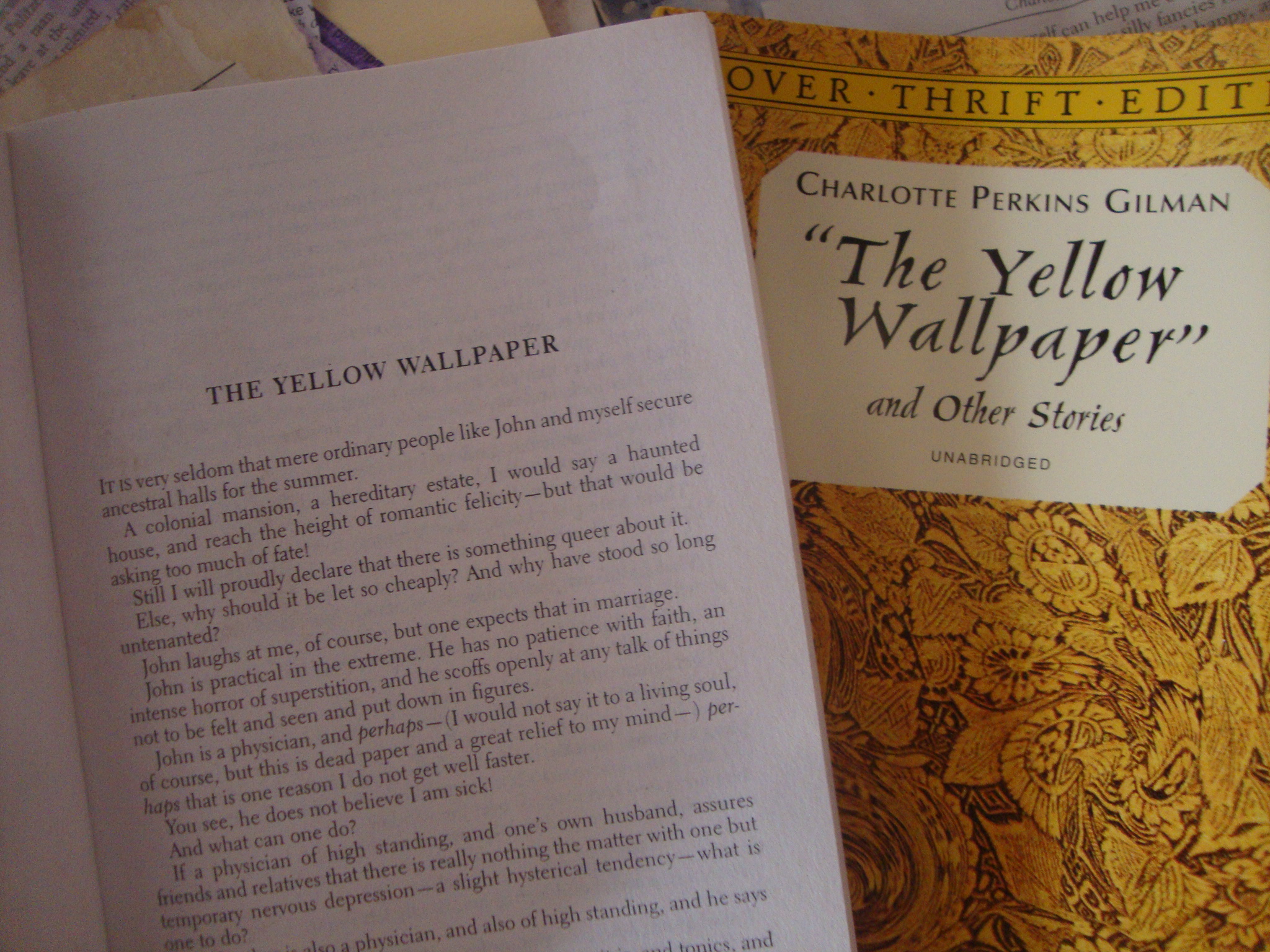
The Yellow Wallpaper” by Charlotte Perkins Gilman is a brilliant 1892 story that presents the first-person chronicle of a woman in a stifling marriage driven mad by spirit-crushing, enforced boredom and her horrified obsession with the floridly ugly wallpaper in the bedroom of the country manor her husband has rented for the summer. The story works as both a feminist critique of the societal suppression of women in the 19th century and as a gothic horror tale; one could read it even as a type of haunted house story (and viewed as all three, it is an excellent piece to compare and contrast with Henry James’ 1898 novel The Turn of the Screw.)
While there’s a great deal in this tale to examine, one of the aspects of the story that struck me was Gilman’s symbolic use of paper.
On the one hand, there’s the paper that the narrator writes upon: “this is dead paper and a great relief to my mind”. The paper in her notebook might be dead, but her thoughts are alive, and her physician husband frowns upon her writing those thoughts down as a violation of the strict rest she is supposed to endure as part of the “cure” for the nervous depression he has diagnosed her with. She must hide her writing from her husband and his sister Jane, whom he has enlisted to keep house.
Why does she see the notebook paper she writes upon as “dead”? Because it’s whitely blank. It’s completely passive, lacks any innate imaginative qualities and bends completely to the will of whomever seeks to use it … just like the perfect Victorian housewife. The narrator’s intellect and imagination are seen as defects in her world, and initially she tries to use her writing as a way of getting those aspects of herself out of her system. But she realizes that if she purges those parts of herself, she will be just as dead as the paper she writes upon.
Conversely, she sees the hideous wallpaper that surrounds her in her room as not just a stylized representation of flora but an actual living creature. She first tries to make sense of its weird, conflicting, confounding patterns – much as she’s trying to make sense of the complex, illogical rules and double-standards of the patriarchal world she’s trapped in. Then she starts to see malign eyes moving inside the pattern. As her madness progresses, she starts to see the image of a lurking woman trapped inside the pattern, and the narrator becomes obsessed with getting her out.
At the climax of the story, the narrator has become convinced that she herself was the woman trapped inside the wallpaper all along and she glories in having freed herself as she crawls on her hands and knees around the perimeter of the room, an insane orbit that some other woman travelled before her, leaving a streak for her to follow: “But here I can creep smoothly on the floor, and my shoulder just fits in that long smooch around the wall, so I cannot lose my way.”
Gilman’s careful, layered use of the two kinds of paper as symbol and metaphor is truly impressive and masterful, and it the kind of thing I need to be more mindful of and to try to work into my own fiction more often.
Image by Julie Jordan Scott.
Leave a Reply
You must be logged in to post a comment.